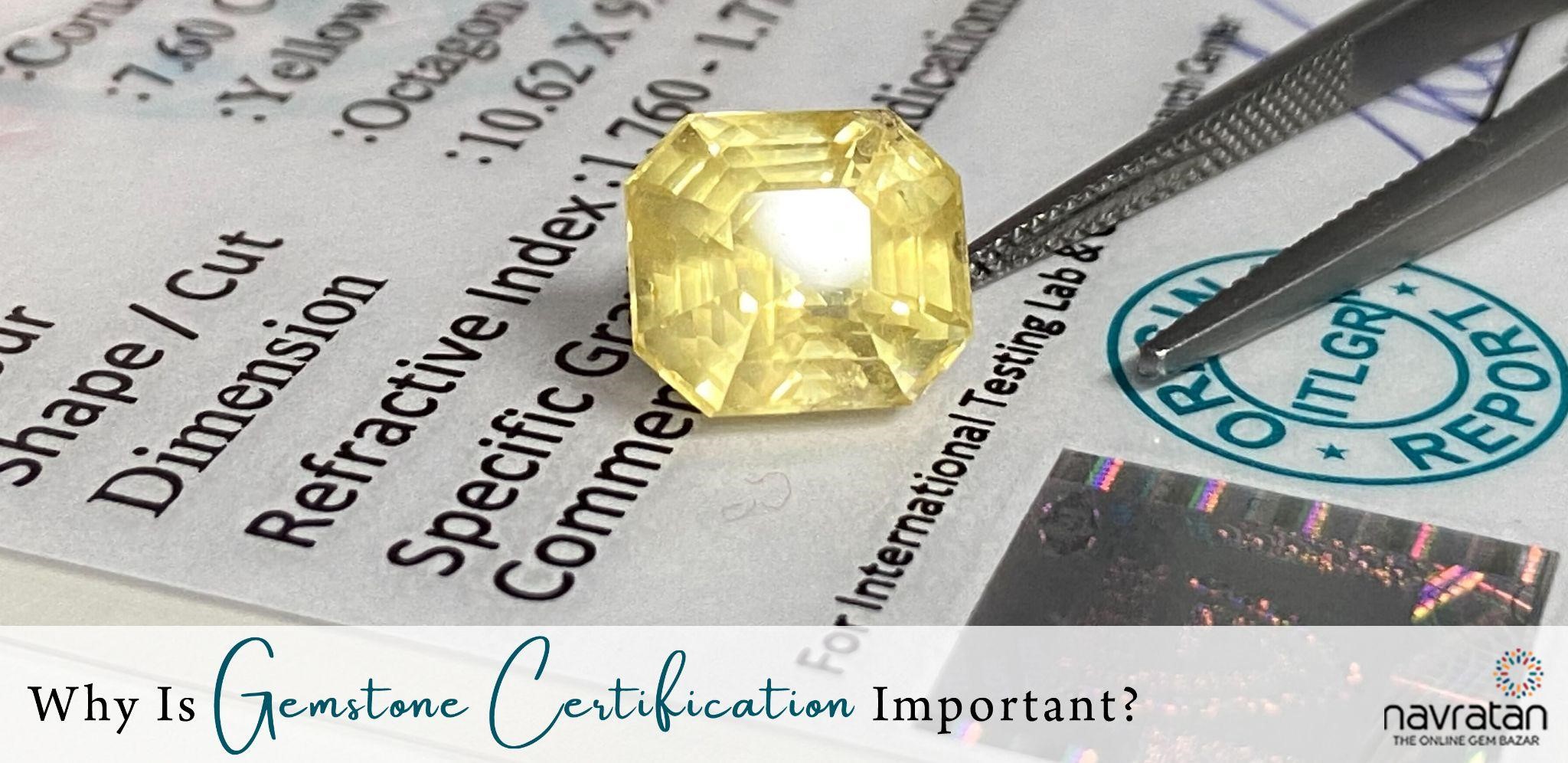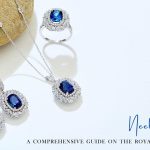A gemstone certification is a document issued by a licensed and authenticated gemological laboratory. The specifications featured in the certificates are the weight, authenticity, color, and clarity grades of the gemstone. Certifications are necessary for any stone to determine its rarity and value. While buying any gemstone online or offline, these documents play an essential role. This is because the customer knows why the value of a specific stone is high. Though certificates are not always present, one must ask for them before buying any precious or semi-precious stone. One must purchase gemstones from an authenticated gem dealer only. This blog is about the importance of gemstone certification.
Ensuring Authenticity and Origin
An authenticated gemstone certification displays information about the particular gemstone. For instance, the GRS certification (Gem Research Swisslab) for blue sapphire stone, apart from grading the stone based on carat weight, cut, clarity, origin, and color, also states whether the stone is treated. The gemstones like rubies, sapphire, and emeralds are graded based on the intensity of the color. The color subcategories for the GRS type go from intense to vivid blue, vivid blue, and vivid to deep blue. The individual gemstones (sapphires s an example here) are graded as per these particular factors:
- Sapphires with color zoning and disturbing inclusions don’t qualify
- Sapphires displaying grey and black extinctions are not graded
- Synthetic gemstones or those that are heat treated or treated by diffusion don’t qualify
The gemstone certification builds trust and confidence among buyers. The accreditation makes the buyers informed about the characteristics exhibited by the gemstone. It thus sets a parameter for their buying decision. The resale value of certified gems is often higher as there is documented evidence of their quality and authenticity. There is a valid question that suggests the governing features that significantly influence the grading system of all the certification laboratories. Let’s get a brief about these factors.
Quality Assessment and Grading: The 4 C’s
As mentioned above, the gemstone grading analysis includes its origin, cut, color, clarity, carat weight, and measurements. Each of these grading factors is discussed below briefly:
- Color: The most important feature that characterizes the overall beauty and price of the stone is its color. The gemstone’s color is described by three important factors: hue, tone, and saturation. The hue of the gem is its color. These can be the primary hue or a combination of shades such as orange-red or violet-blue. The tone refers to the range of colors, from light pink to medium pink. Saturation is the intensity of the color that ranges from lower to higher grade. The gemstones with high saturation are among the desirable ones.
- Clarity: This factor is indeed another significant factor that certifies the gemstone. As per GIA certification, the clarity curve for the gemstone’s value increases from opaque to eye-clean inclusions. For instance, Original Neelam stone with no inclusions are valued more. However, Kashmir blue sapphires display a velvety appearance due to tiny inclusions. These inclusions give a beautiful visual effect without impacting the stone’s value.
- Carat Weight: The size of the gemstone influences its value. According to GIA’s grading system, as the stone’s size increases, the price also increases. However, the large size of blue sapphires is challenging to find, but their value is considerably high.
- Cut: The cutting style defines the price of the stone. As per GIA, a poor-cutting style cuts down the cost of the stone. For instance, a gemstone cut poorly doesn’t add any value. In contrast, those cut with fine precision and perfect color distribution increase the prices of the stone.
Other than this, the origin of the gemstones also decides the price and comes into the quality assessment factor done by most gemstone-certified institutions.
Value Determination and Market Credibility
The value of certified gemstones is a predominant factor that one should consider while buying them. Each certification institute has its guidelines and parameters to certify the stones. The gems with high clarity, color, carat weight, and precision cut add value and are prized higher. The flawless stones with saturated color are highly desirable. The market value of colored stones is increasing with time. The trend for the use of colored gemstones as engagement rings is surging. Thus, consumers are becoming aware of the importance of gemstone certification. The market credibility of the certified gems has influenced the trade associations as well. For instance, the United States gemstone market has shown increased popularity of colored stones like emeralds, sapphires, rubies, tanzanite, and tourmaline. With the rise in e-commerce sales platforms, consumers prefer buying colored gemstones online. Consumers on such platforms compare the prices and then lend for purchasing decisions. Thus, gemstone sellers need to add more product features to ensure a grip on the competitive landscape.
Building Consumer Confidence
The gemstone certification benefits both buyers and sellers. While purchasing a certified gemstone, the buyers are confident they are getting what they paid for. The certificates influence the buyers’ decision-making as they can compare the quality characteristics of the gemstones initiating a better buying decision. While purchasing any gem, it is required that the buyer should have perfect information about the gem. The gemstone certificates provide ample knowledge about the stones, educating the customers about the wonders of nature they possess.
On the other hand, the sellers demonstrate their commitment to delivering authentic stones to the buyers. They build customer confidence that what they are getting is worth investing in. This indeed also helps them mark their presence in the competitive environment.
To conclude, gemstone certification is essential. In the context of Navratan, the online gem bazaar, the value of stones is also decided on the certificate. For instance, blue sapphire stone prices are marked based on its color and other grading factors. Certified blue sapphire gemstones are desirable, and their prices are indeed more. The Royal Blue Sapphire stone’s 1.61-carat weight is priced higher than the one with 1.02 carat. Though both gemstones are GRS certified, the origin of the gemstone adds a difference.
The Sri Lankan Royal blue sapphires (1.61 carat) are higher priced than those from Madagascar (1.02 carat). Thus, the certification factor does account for the higher value, but other factors intervene too. Besides other factors like determining the stone’s value through certification form, it also helps state these stones as heirloom stones. After all, natural and rare stones with high durability are perfect for heirloom stones, and all these features are precisely specified in the certification form.


